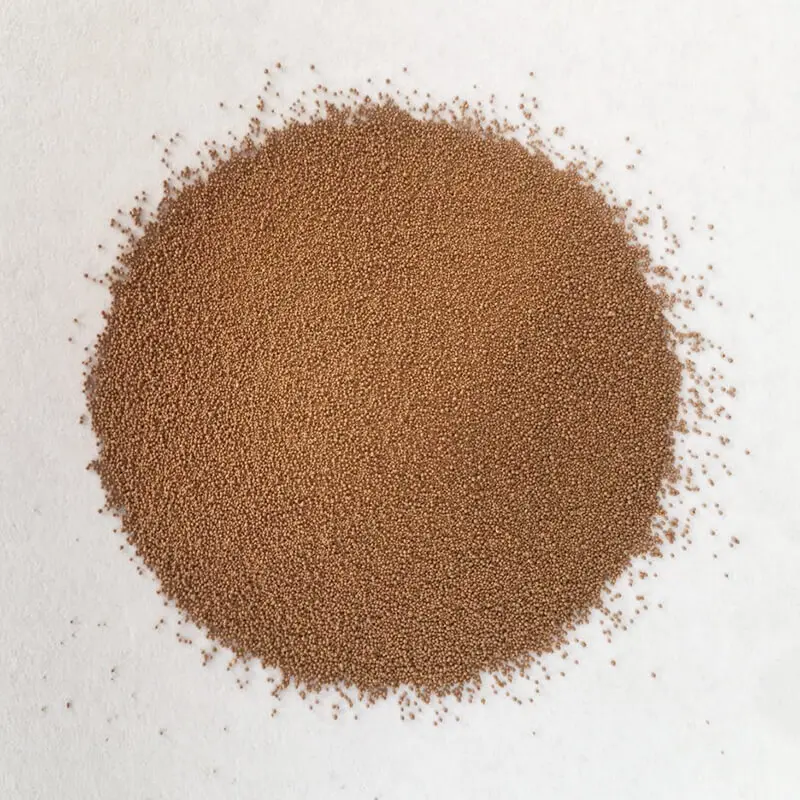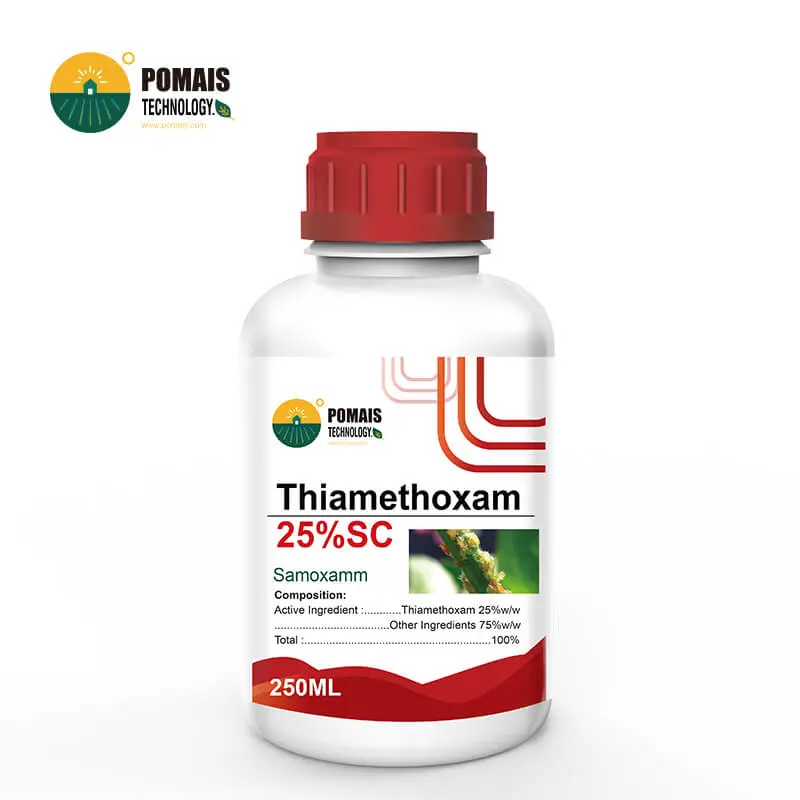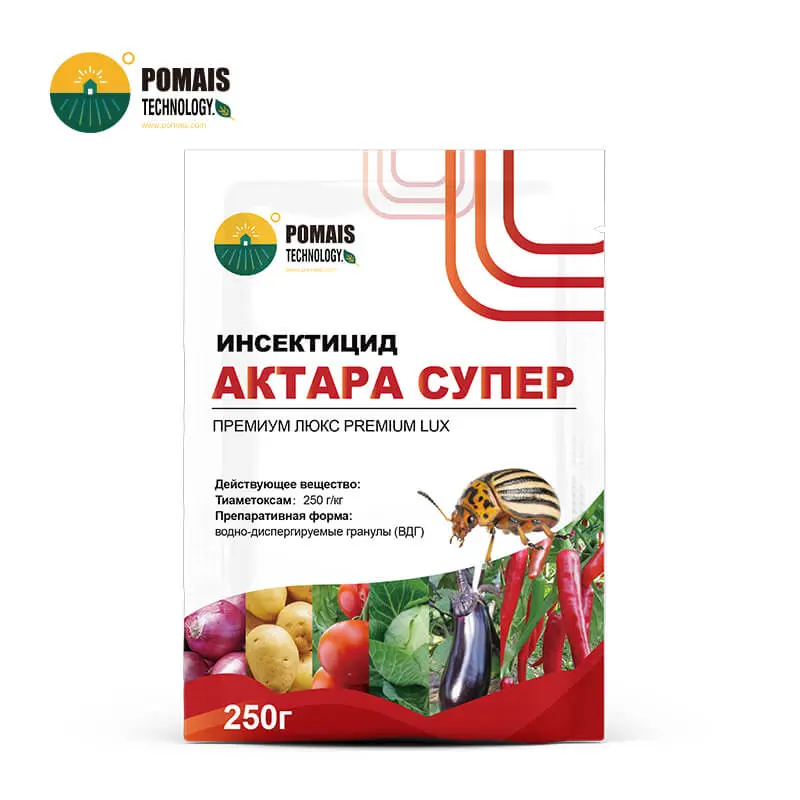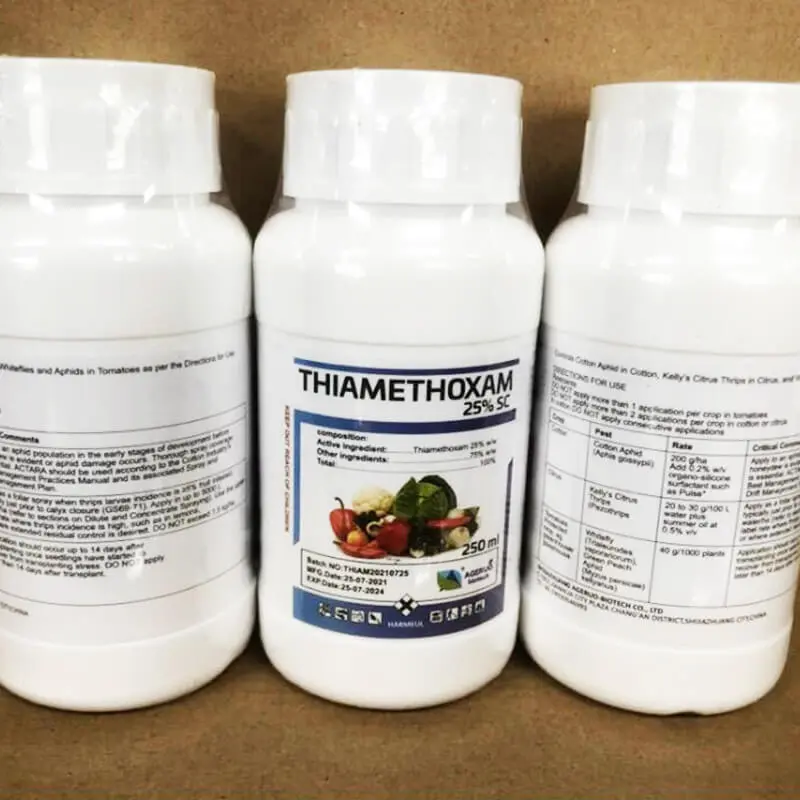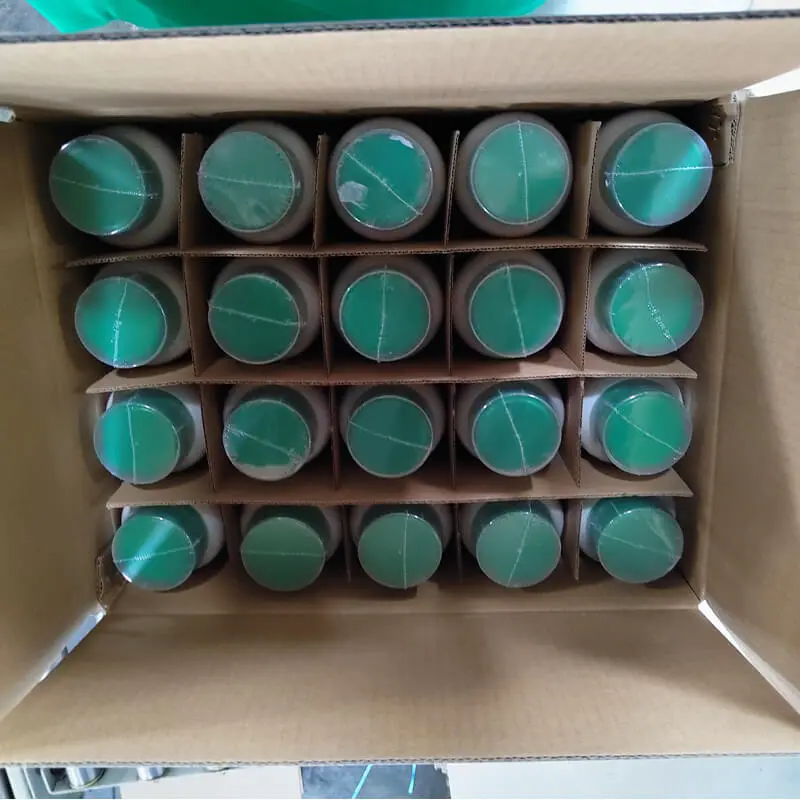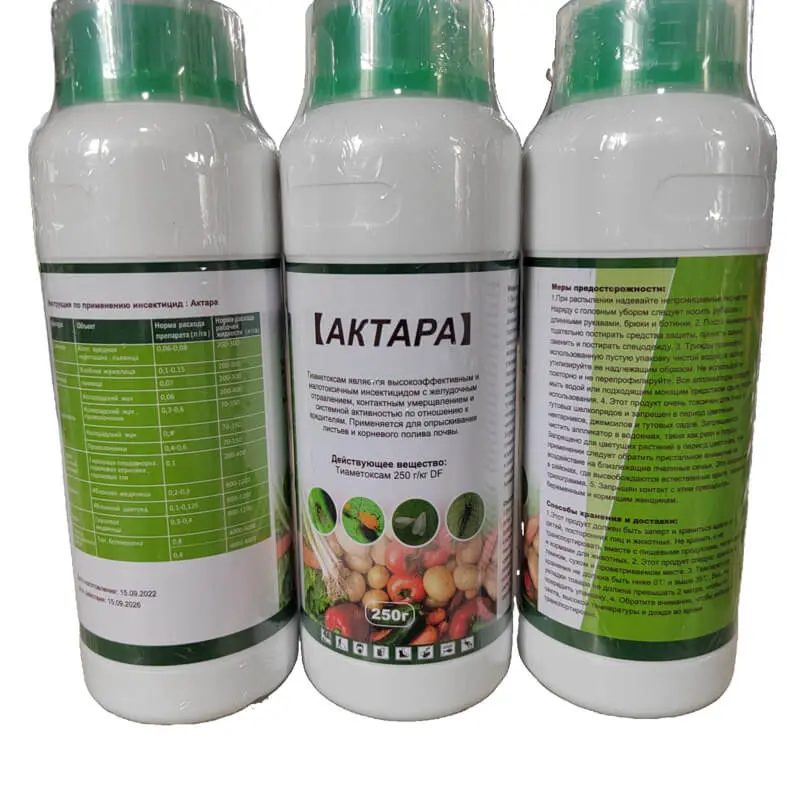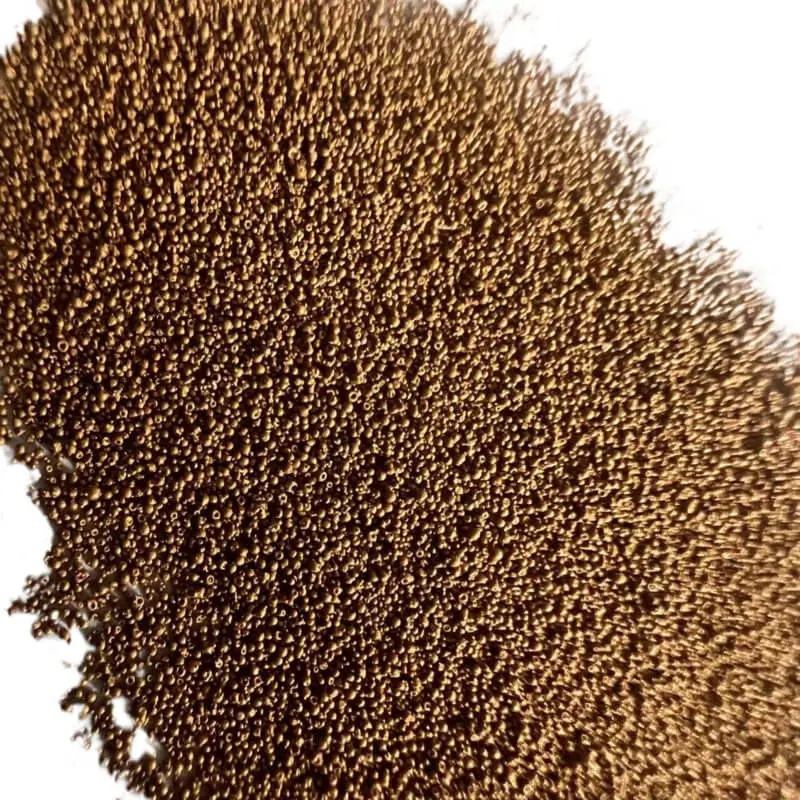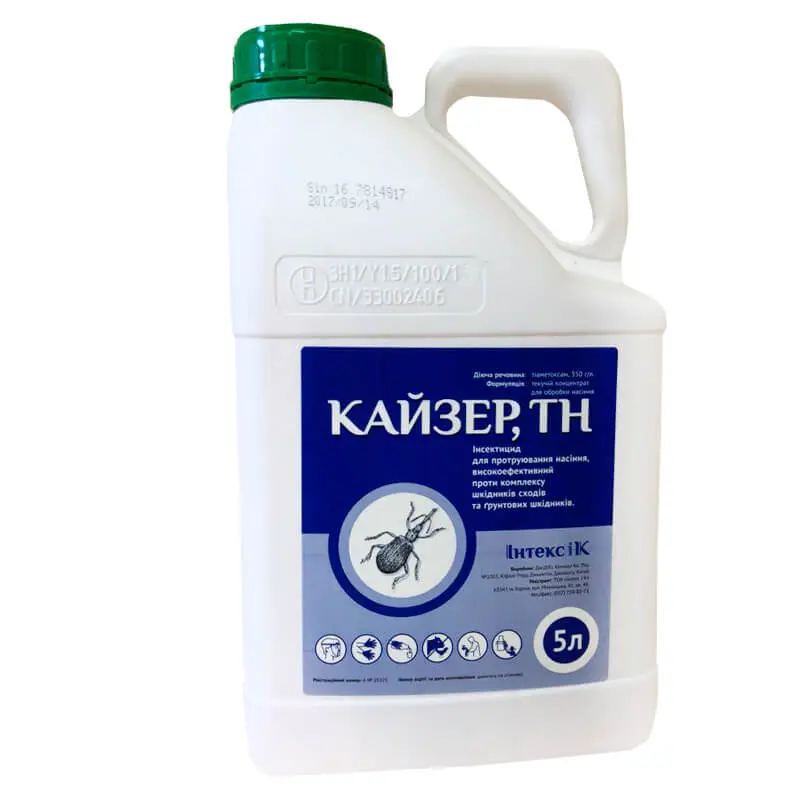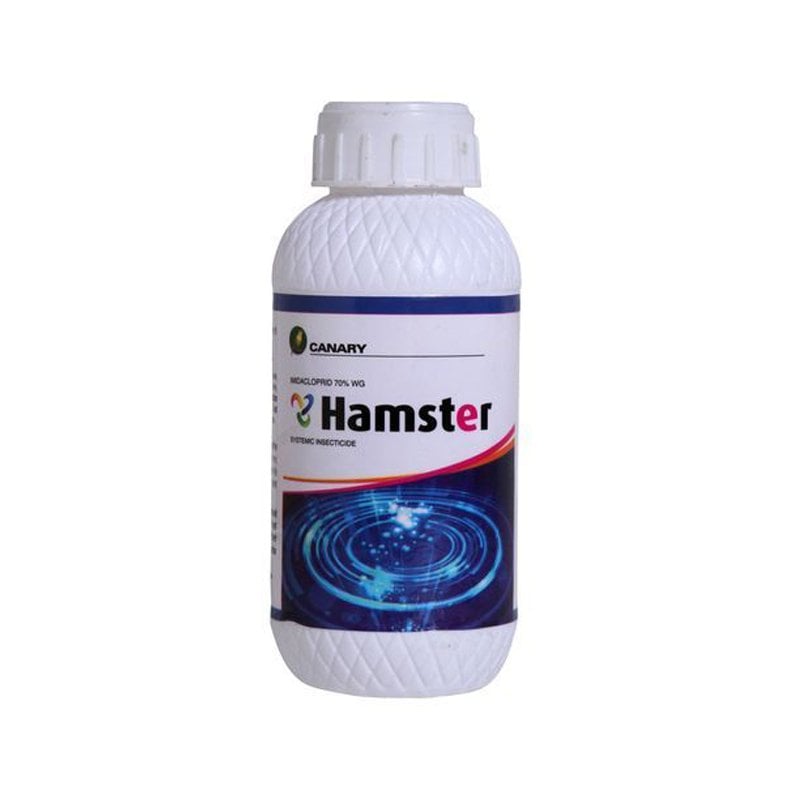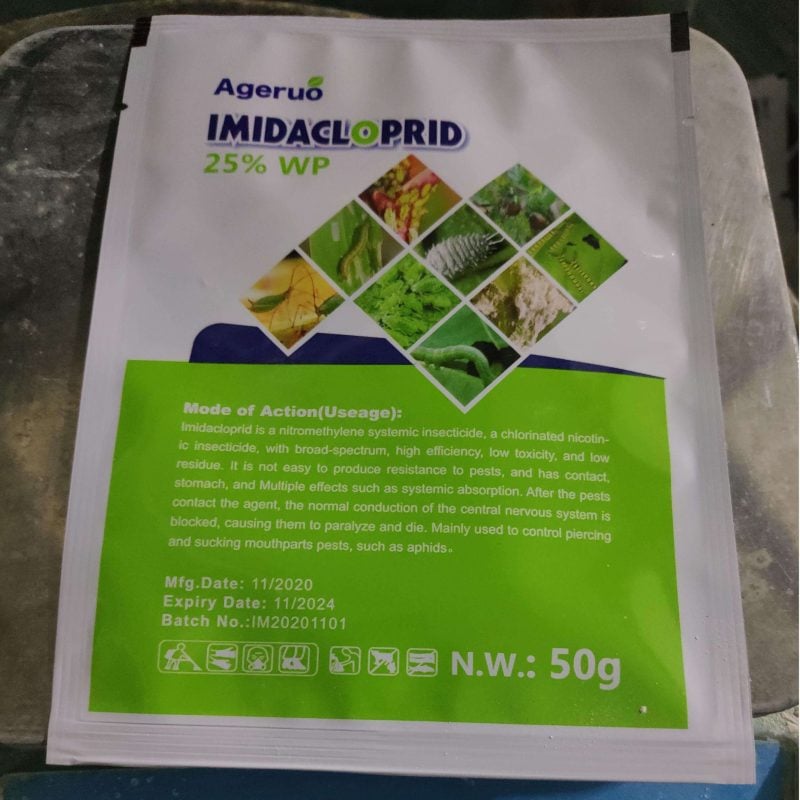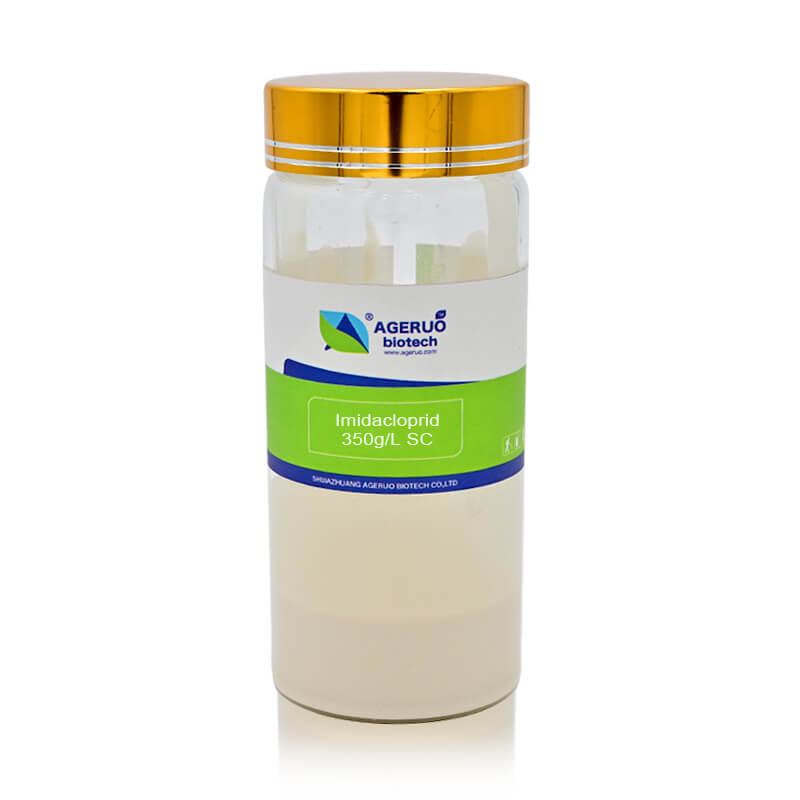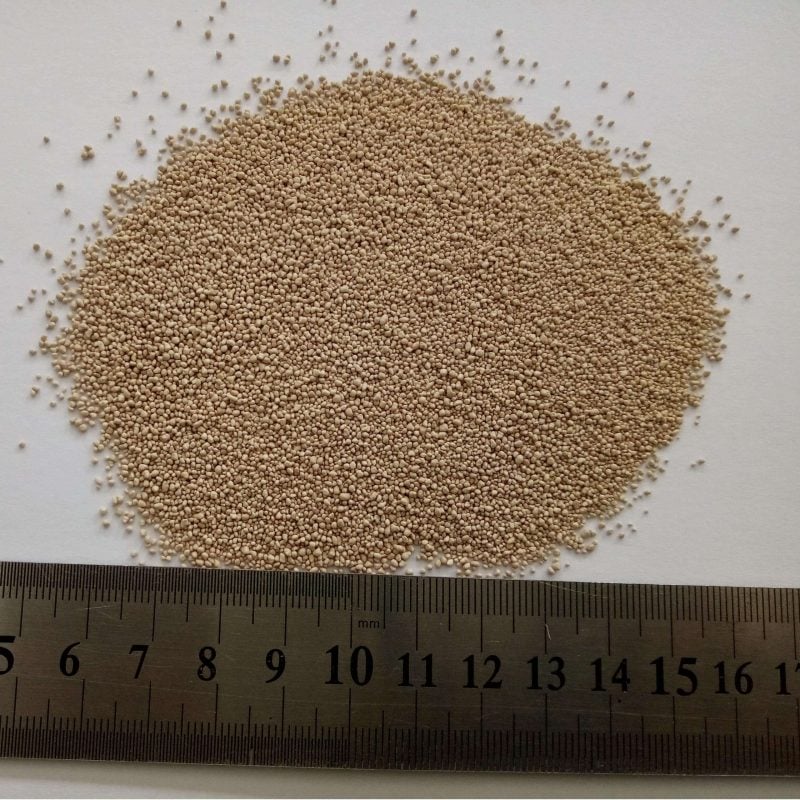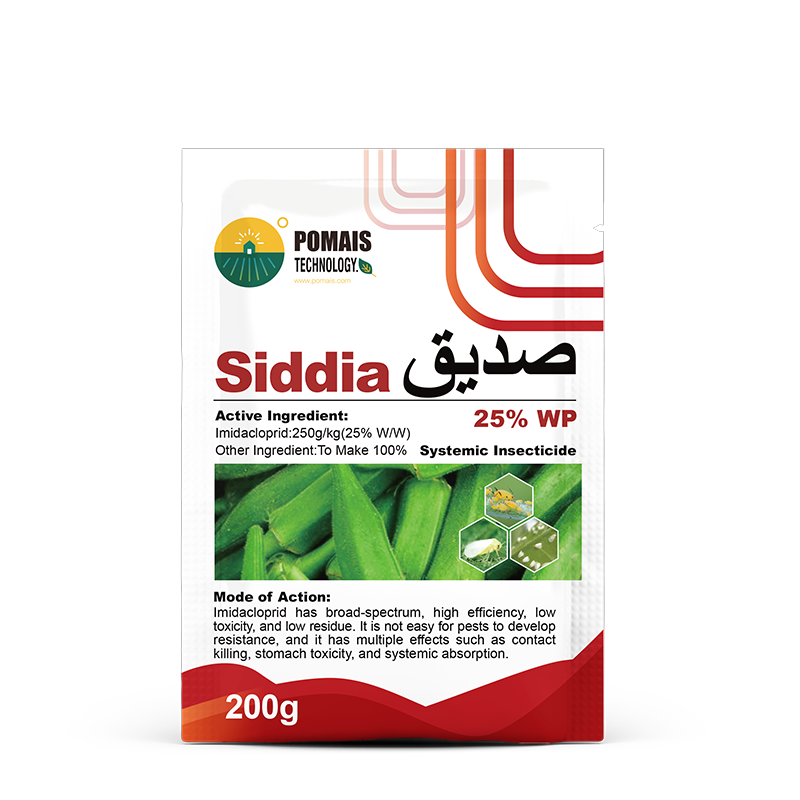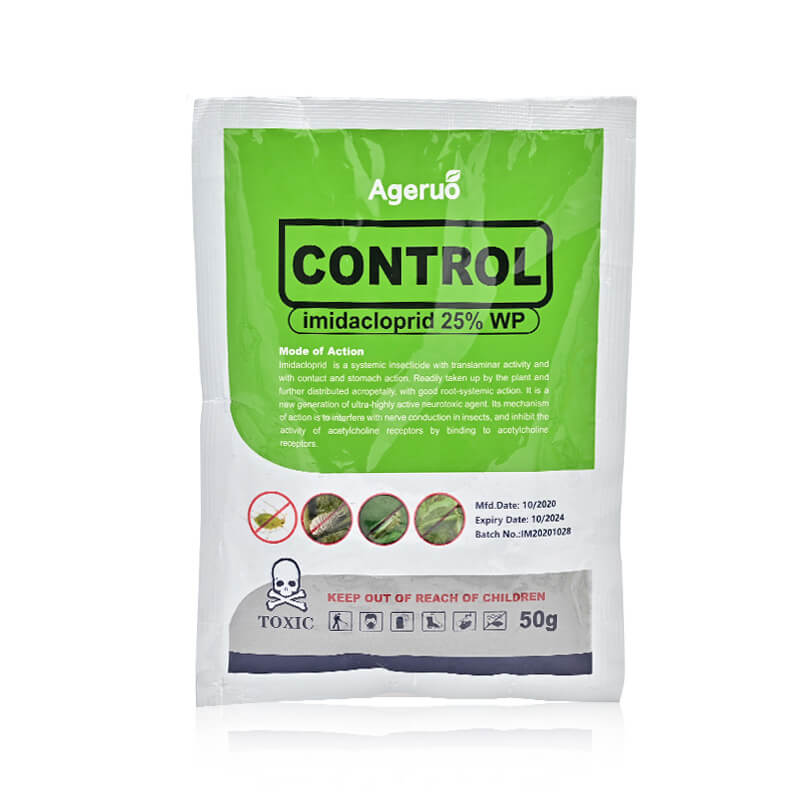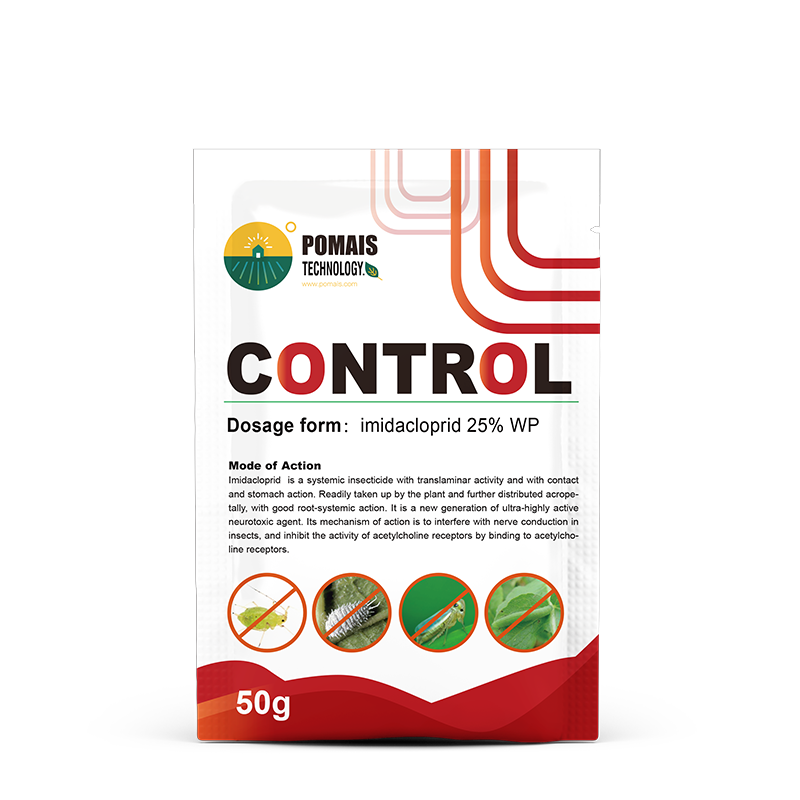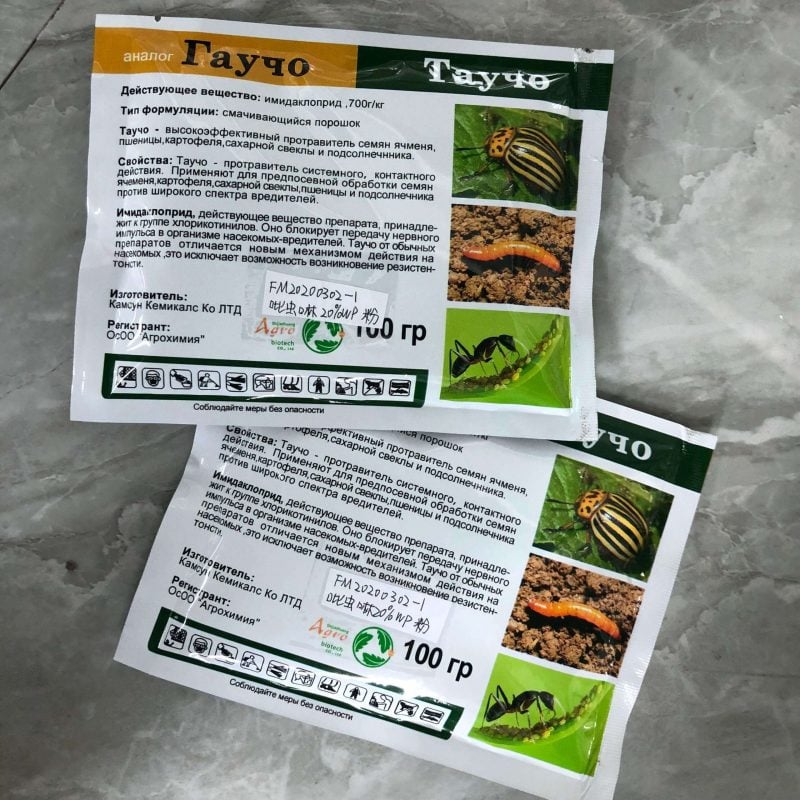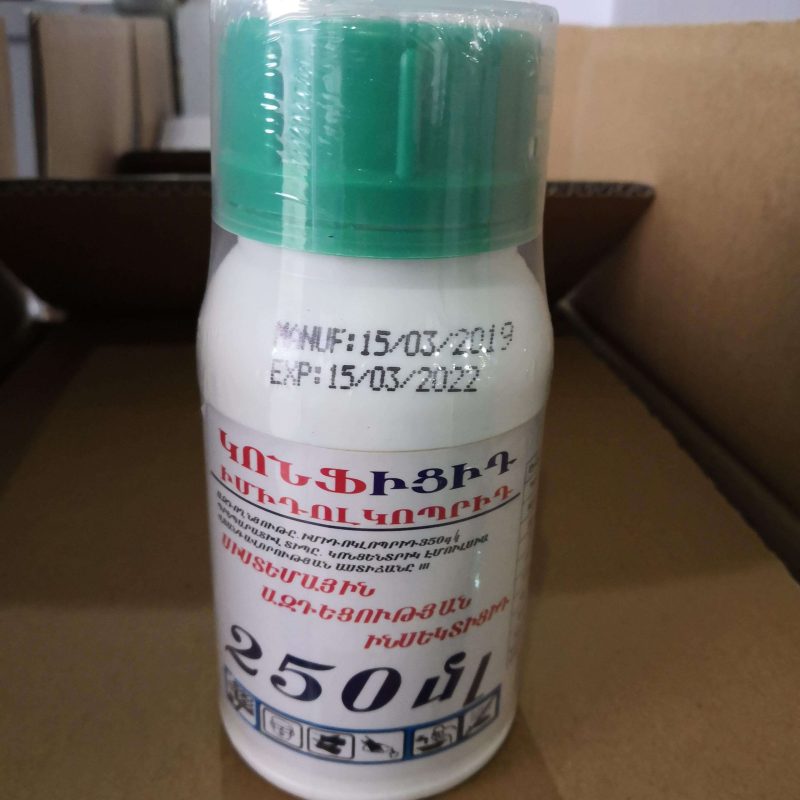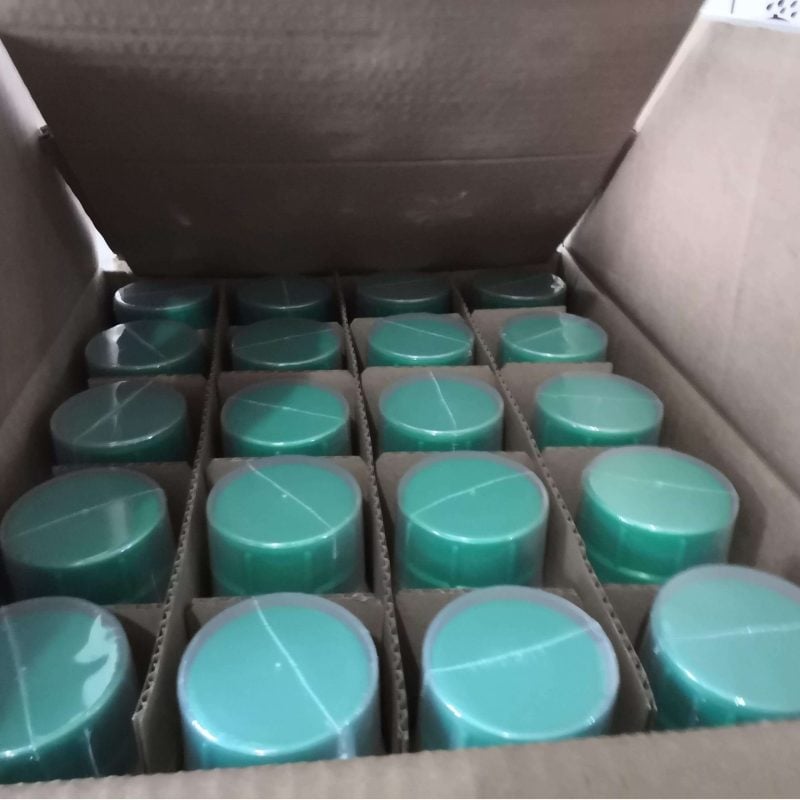Thiamethoxam vs Imidacloprid: A Comparative Guide for Modern Pest Control
Thiamethoxam and imidacloprid are two leading active ingredients in the neonicotinoid class of insecticides, both widely used in agriculture, horticulture, public health, and seed treatment. As systemic insecticides, they are absorbed by plants and provide protection from the inside out, targeting a broad range of sap-feeding and chewing pests.
In this article, we present a comprehensive comparison of thiamethoxam vs imidacloprid, covering their mode of action, effectiveness, resistance profiles, application methods, safety, and commercial use, to help buyers and industry professionals make informed choices.
What Is Thiamethoxam?
Thiamethoxam is a second-generation neonicotinoid insecticide known for its strong systemic action and high efficacy against a wide range of sucking and chewing pests. It is rapidly absorbed by plant tissues and offers both contact and ingestion activity, commonly used in foliar sprays, seed treatments, and soil applications.
What Is Imidacloprid?
Imidacloprid is the first commercialized neonicotinoid insecticide, widely used worldwide for its reliable control of aphids, whiteflies, leafhoppers, and soil insects. It provides long residual protection and is a mainstay in rice, corn, soybeans, and ornamental pest management programs.
Quick Comparison Table
| Feature | Thiamethoxam | Imidacloprid |
|---|---|---|
| Chemical Class | Neonicotinoid (Nitroguanidine) | Neonicotinoid (Nitroguanidine) |
| Mode of Action | IRAC 4A – nAChR agonist | IRAC 4A – nAChR agonist |
| Systemic Activity | Strong | Moderate to strong |
| Speed of Action | Fast knockdown | Moderate |
| Common Formulations | SC, FS, WG, GR, OD | SC, SL, FS, WG, WP |
| Target Pests | Aphids, jassids, thrips | Aphids, planthoppers, whiteflies |
| Typical Crops | Cotton, soybeans, vegetables | Rice, corn, fruits |
| Seed Treatment Compatibility | Excellent | Excellent |
1. Chemical Profile and Mode of Action
| Feature | Thiamethoxam | Imidacloprid |
|---|---|---|
| Insecticide Class | Neonicotinoid | Neonicotinoid |
| IRAC Group | Group 4A | Group 4A |
| Systemicity | Highly systemic | Highly systemic |
| Mode of Action | Binds to nicotinic acetylcholine receptors (nAChRs), causing nerve overstimulation and death | Binds to insect nAChRs, causing neural hyperexcitation and paralysis leading to death |
| Solubility | More water-soluble | Moderate water solubility |
| Onset of Action | Faster acting | Effective but slightly slower |
Both compounds disrupt insect nervous systems by binding to nAChRs, but thiamethoxam tends to act more rapidly, offering faster pest knockdown in many formulations.
2. Target Pests and Effectiveness
Common Target Insects
- Aphids
- Whiteflies
- Thrips
- Leafhoppers
- Beetles
- Mealybugs
- Flea beetles
- Some soil pests
While both are broad-spectrum, thiamethoxam is often considered more effective against certain early-stage sucking pests, especially in seed treatment and foliar sprays. Imidacloprid, being one of the earliest neonicotinoids developed, has a longer market history and is widely accepted for soil and foliar applications.
3. Application Methods and Use Scenarios
| Application Form | Thiamethoxam | Imidacloprid |
|---|---|---|
| Seed treatment | Widely used (e.g., corn, cotton, soybean) | Widely used |
| Soil drench | Effective | Effective |
| Foliar spray | Strong performance | Reliable performance |
| Tree injection | Limited | Often used (e.g., for emerald ash borer) |
Crop Examples:
- Thiamethoxam: Corn, soybeans, cotton, potatoes, cucurbits, tobacco, vegetables
- Imidacloprid: Rice, wheat, maize, sugarcane, citrus, fruits, and ornamental plants
In seed treatment programs, thiamethoxam is often favored for faster absorption and translocation, which provides early protection during germination.
4. Resistance Management
Long-term usage of neonicotinoids has led to resistance concerns, particularly with imidacloprid, which has been on the market since the early 1990s. Several regions have reported reduced efficacy of imidacloprid due to overuse.
In contrast, thiamethoxam, being slightly newer and often used in combination products, is generally considered to have lower resistance pressure.
To combat resistance:
- Use rotational programs with other insecticide classes (e.g., Group 28 diamides, Group 1A carbamates)
- Apply Integrated Pest Management (IPM) strategies
5. Environmental and Regulatory Considerations
| Aspect | Thiamethoxam | Imidacloprid |
|---|---|---|
| Toxicity to bees | High (restricted use near flowering crops) | High (linked to pollinator decline) |
| Soil half-life | ~11–35 days (varies by condition) | ~40–290 days |
| Aquatic impact | Moderate risk | Higher risk (longer persistence) |
Both insecticides are under regulatory scrutiny in certain regions (e.g., the EU), particularly due to concerns over bee toxicity and water contamination. Application timing and method must follow local regulations strictly to avoid off-target effects.
6. Commercial Formulations and Compatibility
Our factory offers both thiamethoxam and imidacloprid in a range of formulations:
Thiamethoxam Products:
- 25% WG / WDG
- 30% FS (seed treatment)
- 75% WG
- Combination products (e.g., Thiamethoxam + Lambda-Cyhalothrin)
Imidacloprid Products:
- 20% SL
- 70% WG
- 35% SC
- Combinations (e.g., Imidacloprid + Beta-Cyfluthrin)
We provide OEM & ODM services, custom packaging, and support with COA, MSDS, and product registration for global clients.
Application Recommendations
Thiamethoxam
- Use for fast-acting control of sucking pests like aphids and jassids.
- Ideal for seed treatments in cereals and cotton.
- Works well in foliar sprays for vegetables and fruits.
Imidacloprid
- Preferred for rice pests like planthoppers and whiteflies.
- Excellent in soil drench or drip irrigation for fruit and vegetable crops.
- Commonly used in greenhouse and ornamental settings.
Conclusion: Thiamethoxam vs Imidacloprid – Which One to Choose?
Choosing between thiamethoxam vs imidacloprid depends on:
- Target crop and pest
- Application method
- Resistance management needs
- Environmental sensitivity
- Budget and regulatory compliance
Summary:
- Thiamethoxam: Ideal for seed treatments and foliar sprays requiring fast action and early-stage pest protection.
- Imidacloprid: Preferred for soil drench, tree injection, and cost-sensitive markets with a longer safety record.
Looking for Reliable Bulk Supply?
We are a professional manufacturer of agricultural insecticides with over 10 years of export experience. Our strengths include:
- Large-scale production of neonicotinoids
- Custom formulations for different markets
- Fast delivery and door-to-door logistics
- Free samples for quality testing
- Technical and regulatory support for global partners
If you’re a distributor, agrochemical brand, or government buyer, contact us to discuss how our thiamethoxam and imidacloprid products can support your business growth.
Partner with a Reliable Manufacturer
POMAIS specializes in high-quality insecticide formulations for global B2B markets. We provide:
- Custom formulations: SC, FS, WG, SL, EC
- Private labeling and branding support
- Free samples and registration documents (COA, MSDS, TDS)
- Reliable delivery and OEM/ODM solutions
Thiamethoxam and imidacloprid are two leading active ingredients in the neonicotinoid class of insecticides, both widely used in agriculture, horticulture, public health, and seed treatment. As systemic insecticides, they are absorbed by plants and provide protection from the inside out, targeting a broad range of sap-feeding and chewing pests.
In this article, we present a comprehensive comparison of thiamethoxam vs imidacloprid, covering their mode of action, effectiveness, resistance profiles, application methods, safety, and commercial use, to help buyers and industry professionals make informed choices.
What Is Thiamethoxam?
Thiamethoxam is a second-generation neonicotinoid insecticide known for its strong systemic action and high efficacy against a wide range of sucking and chewing pests. It is rapidly absorbed by plant tissues and offers both contact and ingestion activity, commonly used in foliar sprays, seed treatments, and soil applications.
What Is Imidacloprid?
Imidacloprid is the first commercialized neonicotinoid insecticide, widely used worldwide for its reliable control of aphids, whiteflies, leafhoppers, and soil insects. It provides long residual protection and is a mainstay in rice, corn, soybeans, and ornamental pest management programs.
Quick Comparison Table
| Feature | Thiamethoxam | Imidacloprid |
|---|---|---|
| Chemical Class | Neonicotinoid (Nitroguanidine) | Neonicotinoid (Nitroguanidine) |
| Mode of Action | IRAC 4A – nAChR agonist | IRAC 4A – nAChR agonist |
| Systemic Activity | Strong | Moderate to strong |
| Speed of Action | Fast knockdown | Moderate |
| Common Formulations | SC, FS, WG, GR, OD | SC, SL, FS, WG, WP |
| Target Pests | Aphids, jassids, thrips | Aphids, planthoppers, whiteflies |
| Typical Crops | Cotton, soybeans, vegetables | Rice, corn, fruits |
| Seed Treatment Compatibility | Excellent | Excellent |
1. Chemical Profile and Mode of Action
| Feature | Thiamethoxam | Imidacloprid |
|---|---|---|
| Insecticide Class | Neonicotinoid | Neonicotinoid |
| IRAC Group | Group 4A | Group 4A |
| Systemicity | Highly systemic | Highly systemic |
| Mode of Action | Binds to nicotinic acetylcholine receptors (nAChRs), causing nerve overstimulation and death | Binds to insect nAChRs, causing neural hyperexcitation and paralysis leading to death |
| Solubility | More water-soluble | Moderate water solubility |
| Onset of Action | Faster acting | Effective but slightly slower |
Both compounds disrupt insect nervous systems by binding to nAChRs, but thiamethoxam tends to act more rapidly, offering faster pest knockdown in many formulations.
2. Target Pests and Effectiveness
Common Target Insects
- Aphids
- Whiteflies
- Thrips
- Leafhoppers
- Beetles
- Mealybugs
- Flea beetles
- Some soil pests
While both are broad-spectrum, thiamethoxam is often considered more effective against certain early-stage sucking pests, especially in seed treatment and foliar sprays. Imidacloprid, being one of the earliest neonicotinoids developed, has a longer market history and is widely accepted for soil and foliar applications.
3. Application Methods and Use Scenarios
| Application Form | Thiamethoxam | Imidacloprid |
|---|---|---|
| Seed treatment | Widely used (e.g., corn, cotton, soybean) | Widely used |
| Soil drench | Effective | Effective |
| Foliar spray | Strong performance | Reliable performance |
| Tree injection | Limited | Often used (e.g., for emerald ash borer) |
Crop Examples:
- Thiamethoxam: Corn, soybeans, cotton, potatoes, cucurbits, tobacco, vegetables
- Imidacloprid: Rice, wheat, maize, sugarcane, citrus, fruits, and ornamental plants
In seed treatment programs, thiamethoxam is often favored for faster absorption and translocation, which provides early protection during germination.
4. Resistance Management
Long-term usage of neonicotinoids has led to resistance concerns, particularly with imidacloprid, which has been on the market since the early 1990s. Several regions have reported reduced efficacy of imidacloprid due to overuse.
In contrast, thiamethoxam, being slightly newer and often used in combination products, is generally considered to have lower resistance pressure.
To combat resistance:
- Use rotational programs with other insecticide classes (e.g., Group 28 diamides, Group 1A carbamates)
- Apply Integrated Pest Management (IPM) strategies
5. Environmental and Regulatory Considerations
| Aspect | Thiamethoxam | Imidacloprid |
|---|---|---|
| Toxicity to bees | High (restricted use near flowering crops) | High (linked to pollinator decline) |
| Soil half-life | ~11–35 days (varies by condition) | ~40–290 days |
| Aquatic impact | Moderate risk | Higher risk (longer persistence) |
Both insecticides are under regulatory scrutiny in certain regions (e.g., the EU), particularly due to concerns over bee toxicity and water contamination. Application timing and method must follow local regulations strictly to avoid off-target effects.
6. Commercial Formulations and Compatibility
Our factory offers both thiamethoxam and imidacloprid in a range of formulations:
Thiamethoxam Products:
- 25% WG / WDG
- 30% FS (seed treatment)
- 75% WG
- Combination products (e.g., Thiamethoxam + Lambda-Cyhalothrin)
Imidacloprid Products:
- 20% SL
- 70% WG
- 35% SC
- Combinations (e.g., Imidacloprid + Beta-Cyfluthrin)
We provide OEM & ODM services, custom packaging, and support with COA, MSDS, and product registration for global clients.
Application Recommendations
Thiamethoxam
- Use for fast-acting control of sucking pests like aphids and jassids.
- Ideal for seed treatments in cereals and cotton.
- Works well in foliar sprays for vegetables and fruits.
Imidacloprid
- Preferred for rice pests like planthoppers and whiteflies.
- Excellent in soil drench or drip irrigation for fruit and vegetable crops.
- Commonly used in greenhouse and ornamental settings.
Conclusion: Thiamethoxam vs Imidacloprid – Which One to Choose?
Choosing between thiamethoxam vs imidacloprid depends on:
- Target crop and pest
- Application method
- Resistance management needs
- Environmental sensitivity
- Budget and regulatory compliance
Summary:
- Thiamethoxam: Ideal for seed treatments and foliar sprays requiring fast action and early-stage pest protection.
- Imidacloprid: Preferred for soil drench, tree injection, and cost-sensitive markets with a longer safety record.
Looking for Reliable Bulk Supply?
We are a professional manufacturer of agricultural insecticides with over 10 years of export experience. Our strengths include:
- Large-scale production of neonicotinoids
- Custom formulations for different markets
- Fast delivery and door-to-door logistics
- Free samples for quality testing
- Technical and regulatory support for global partners
If you’re a distributor, agrochemical brand, or government buyer, contact us to discuss how our thiamethoxam and imidacloprid products can support your business growth.
Partner with a Reliable Manufacturer
POMAIS specializes in high-quality insecticide formulations for global B2B markets. We provide:
- Custom formulations: SC, FS, WG, SL, EC
- Private labeling and branding support
- Free samples and registration documents (COA, MSDS, TDS)
- Reliable delivery and OEM/ODM solutions

